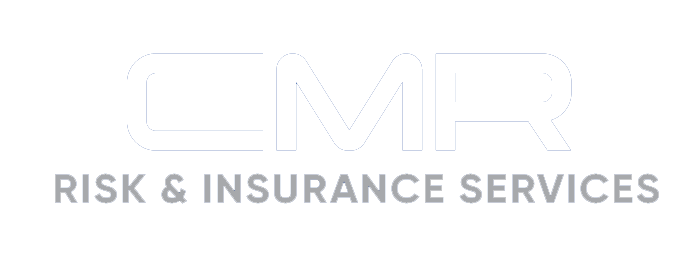Business Continuity Planning Benefits

Unexpected disasters can impact organizations, their operations and stakeholders. Natural catastrophes, cyberattacks, public health crises and supply chain incidents can all have serious consequences. These and other events can damage commercial property and digital assets, disrupt critical business functions and cause operational downtime. They can also result in illnesses or injuries, emotional harm, and financial losses.
Considering these risks, organizations should adopt proper business continuity plans (BCPs) that outline organizational strategies, standards and policies to promote the continuation of critical business operations amid various disasters. BCPs should include detailed measures to help organizations remain functional and safeguard their stakeholders and essential assets when unanticipated events occur. Although specific plans may vary based on the type of disaster, a typical BCP outlines steps to assist an organization in upholding the following initiatives:
- Continuing delivery of products and services
- Ensuring employees’ and others’ on-site safety
- Minimizing property damage, data loss and infrastructure concerns
- Maintaining access to all equipment, tools and technology needed to perform crucial functions
- Keeping clear and open communication with all relevant parties (e.g., staff, clients, business partners, suppliers and emergency responders) to ensure everyone is well-informed on the latest developments and any responsibilities they may have in addressing the matter.
Successful BCPs generally include detailed guidelines, provide defined response levels that outline vital business functions and recovery objectives, offer flexibility in navigating different emergency scenarios, and allow for maximum collaboration and transparency among stakeholders. BCPs can provide several benefits, including:
- Improved business resilience—Organizations with BCPs are better equipped to handle unexpected disasters and emergencies, reducing the risk of major disruptions and damage from these events.
- Enhanced stakeholder confidence—With BCPs, organizations can demonstrate to their customers, suppliers, business partners, investors and other stakeholders their commitment to disaster preparedness and readiness to handle the most difficult scenarios. This can help organizations maintain trust among their stakeholders and improve their belief that they will be protected during emergencies.
- Increased competitive edge—BCPs help showcase the organization’s ability to manage crises effectively. As certain disasters (e.g., natural catastrophes and cyberattacks) become more frequent, BCPs can provide a competitive edge in their respective industries and help foster ongoing financial and operational success.
- Improved decision-making processes and employee morale—Employers can establish clear communication protocols in their BCPs that empower employees to be involved in making critical business decisions and keep them informed. By encouraging employees to play their part in executing disaster preparedness and recovery objectives, their morale can be boosted.
- Bolstered compliance—Some industries (e.g., finance and health care) have regulatory standards regarding BCPs. Engaging in business continuity planning could help organizations stay compliant with applicable legislation, helping avoid potential fines or penalties.
- Reduced coverage costs and an improved insurance experience—BCPs can help organizations adopt more robust risk management strategies, strengthen remediation processes and reduce losses, making them less likely to exceed policy limits and helping them avoid other costs. Underwriters may also categorize organizations with BCPs as less risky and deem them more optimal for selection, resulting in better coverage options, lower deductibles and expanded capacity.
With effective BCPs, organizations can be ready to handle a variety of emergency scenarios, mitigating associated risks. Contact us today for more information.
Preventing Employment Practices Liability Claims and EPLI
All organizations with employees could face claims of wrongful employment actions, leading to litigation, reputational damage and financial loss. To mitigate these risks, employers should implement robust risk management strategies to reduce the likelihood of these claims occurring and secure employment practices liability insurance (EPLI) that can provide coverage if these claims arise.
Many circumstances can lead to an employment practices liability claim. Typically, they occur when an employee, potential employee or former employee believes their workplace rights have been violated by their supervisor, co-worker or other third party. Examples include discrimination based on a protected class, sexual harassment, wrongful termination or demotion, failure to promote or hire, infliction of emotional distress, retaliation for protected conduct and breach of an employment contract.
Strategies to Prevent Employment Practices Liability Claims
Employers can implement several measures to proactively address exposures that may lead to employment practices liability claims. These actions can also improve employee morale and productivity and strengthen employee relationships. Strategies to consider include:
- Develop and maintain an employee handbook with thorough policies and procedures that define and address issues that can lead to employment practices liability claims. The handbook should be readily available, reviewed by the HR department and in-house counsel, and outline the organization’s standards of conduct, explaining the disciplinary measures employers will take if those standards are not met.
- Provide regular training on expectations for appropriate workplace conduct, applicable laws and workplace policies. These sessions should also detail how to report issues and emphasize that all allegations will be investigated and taken seriously. Employers should make sure the content, format and frequency of the training meet any specific requirements mandated by applicable laws, and new hires should receive this information during their orientation or onboarding program.
- Implement best practices to prevent discrimination during recruitment, such as posting job descriptions that identify essential job functions and comply with all applicable laws, including those that may require compensation transparency. Hiring managers should be trained in proper interviewing and hiring techniques and ensure background checks are conducted but not impermissibly utilized.
- Use best practices during the employment relationship by modeling appropriate behavior and ensuring all workplace policies are enforced (e.g., zero-tolerance policies regarding discrimination and harassment). Employers should also conduct regular performance evaluations where feedback is provided and employees feel comfortable bringing forward complaints.
- Investigate all allegations of misconduct and take them seriously. Policies should prevent retaliation against employees for reporting misconduct or participating in a misconduct investigation or lawsuit, protect the potential victims of harassment and provide resources to victims. Organizations should also rely on outside counsel when necessary. When unlawful discrimination, harassment or inappropriate conduct is found, appropriate corrective action, including disciplinary action, should be taken without delay.
- Create, maintain and securely store documentation related to employment practices and investigations of wrongdoing while complying with applicable privacy laws and regulations.
Securing EPLI
Even with robust preventive measures in place, employers may still face employment practices liability claims. EPLI is a specialized policy that can cover the costs associated with these claims and help fill in coverage gaps left by other insurance policies (e.g., general liability insurance). Obtaining EPLI can mitigate an organization’s risks and be an important part of its overall risk management plan.
Conclusion
Employment practices liability claims can be complex and costly, but employers can take proactive steps to reduce their exposure and improve their overall workplace culture. Contact us today for more information.
Article Published By: Zywave, Inc.
